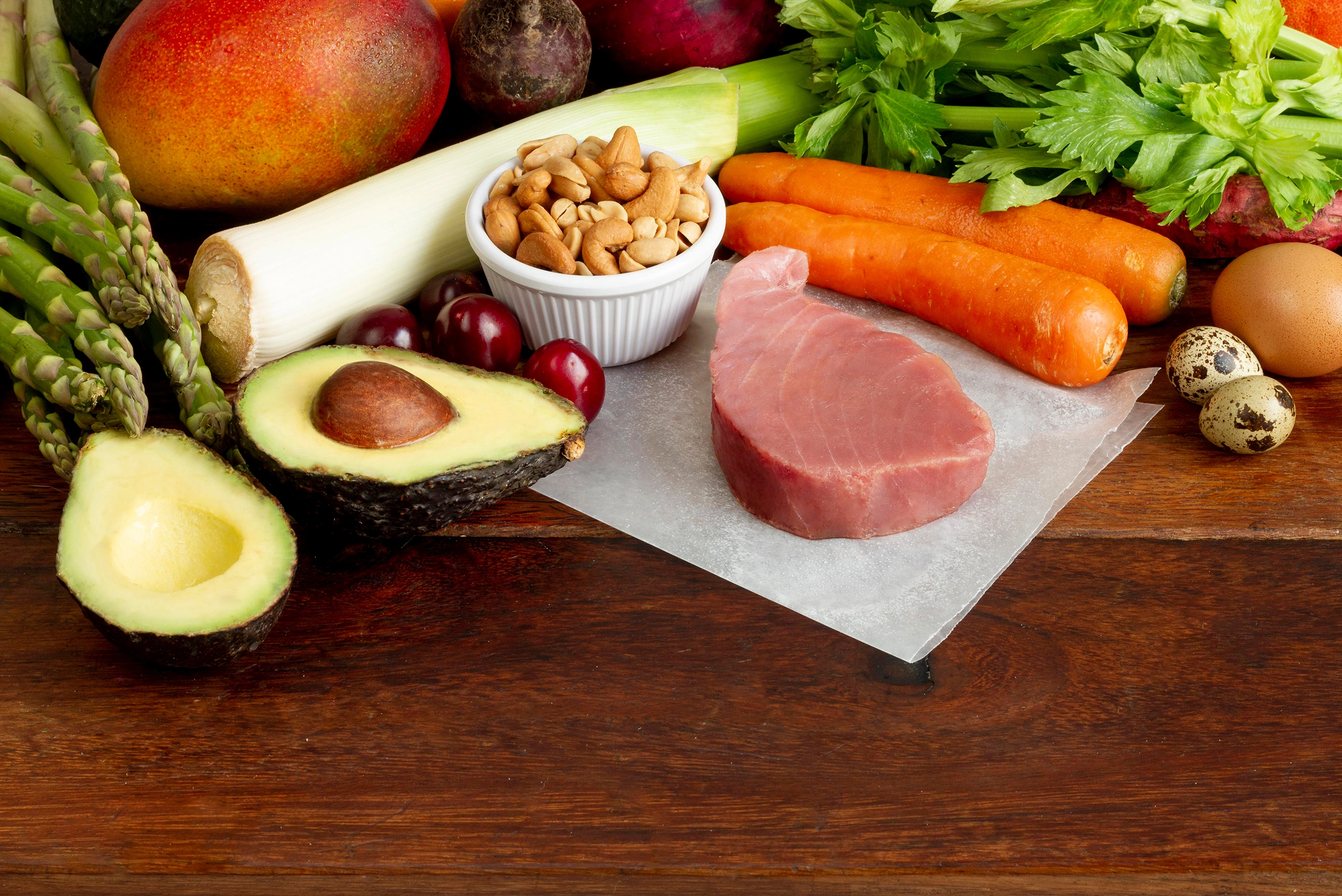The ketogenic diet. It whispers promises of transformation, echoes across social media with striking before-and-after photos, and beckons with the potential to overhaul not just your waistline, but your very well-being. In a world saturated with quick-fix diets that often fail to deliver, the ketogenic diet stands out with its unique scientific premise and compelling results. But let’s cut through the hype – embarking on this high-fat, low-carb journey is a significant commitment. Many dive in filled with hope, only to find themselves grappling with unexpected hurdles: the infamous “keto flu,” the relentless siren call of old cravings, or the disheartening silence of a stalled scale. It’s easy to feel overwhelmed and question if this path, this ketogenic diet lifestyle, is truly for you.
If any of this resonates, you’ve found your anchor. This isn’t just another article regurgitating keto basics. This is your comprehensive, in-depth blueprint – over 2600 words packed with battle-tested strategies, scientific insights, and practical advice designed to help you not just survive the ketogenic diet, but thrive on it. We’ll demystify the science behind ketosis, celebrate the profound benefits that extend far beyond weight loss when following a keto diet, and most importantly, equip you with actionable solutions to foresee and conquer every common challenge. By the end of this guide, you won’t just understand keto; you’ll possess the confidence and knowledge to navigate its nuances, overcome its obstacles, and ultimately transform the ketogenic diet from a mere “diet” into a sustainable, enjoyable, and life-enhancing lifestyle.
So, pour yourself a cup of (unsweetened) coffee or tea, settle in, and let’s embark on this journey together – a journey to unlock the full potential of the ketogenic diet and make it work for you.
Understanding Keto: More Than Just a Diet, It’s a Metabolic Revolution
Before we can effectively tackle the challenges, we need a robust understanding of the ‘what’ and ‘why’ behind the ketogenic diet. This isn’t just about cutting carbs; it’s about fundamentally re-engineering your body’s energy systems.
At its core, the ketogenic diet is a carefully structured eating plan characterized by a very low intake of carbohydrates, a high intake of healthy fats, and a moderate intake of protein. The primary objective is to induce a metabolic state called ketosis. Historically, ketogenic diets were used clinically as early as the 1920s to treat epilepsy, highlighting their profound impact on brain metabolism. Learn more about the history of the ketogenic diet in epilepsy treatment at Epilepsy Foundation. Today, its applications have broadened, but the core principle of this dietary approach remains the same.
In a typical Western diet, your body runs primarily on glucose – sugar derived from carbohydrates (bread, pasta, rice, fruits, sugary drinks). Glucose provides quick, easily accessible energy. When you drastically reduce carbohydrate intake while following a ketogenic diet, usually to a range of 20-50 grams per day or less, you essentially deprive your body of this go-to fuel. This is where your body’s remarkable adaptability kicks in.
In the absence of sufficient glucose, your insulin levels drop significantly. Low insulin signals to your body that it’s time to tap into its vast fat reserves. The liver becomes a central player, initiating a process called ketogenesis. It takes fatty acids (from both your stored body fat and the fats you eat) and converts them into ketone bodies – primarily beta-hydroxybutyrate (BHB), acetoacetate, and acetone. These ketones are then released into the bloodstream and become the new primary fuel source for your muscles, heart, and, very importantly, your brain. The brain, despite being a glucose-hungry organ, can efficiently utilize ketones – a key reason for the mental clarity many experience on the keto diet.
Achieving and maintaining ketosis requires adherence to specific macronutrient ratios. While individual needs vary based on factors like activity level, age, and metabolic health, a Standard Ketogenic Diet (SKD) generally follows this framework:
- Fat: 70-80% of daily calories. This is the cornerstone, providing the raw materials for ketone production and sustained energy.
- Protein: 15-25% of daily calories. Protein is vital for muscle maintenance and various bodily functions, but excessive protein can sometimes be converted to glucose (gluconeogenesis), potentially hindering ketosis. Finding your sweet spot is key when on the ketogenic diet.
- Carbohydrates: 5-10% of daily calories. This strict limitation is the catalyst for the entire metabolic shift.
It’s this precise, high-fat, low-carb formula that coaxes your body into this fat-burning, ketone-producing state. Understanding this fundamental metabolic revolution is crucial when considering the ketogenic diet; it explains not only the benefits but also why an adaptation period (and potential challenges) is a natural part of the process..
The Keto Glow-Up: Unveiling Benefits Beyond the Scale
While shedding pounds is often the initial draw, the true power of a well-formulated ketogenic diet lies in its diverse array of benefits that enhance overall quality of life. Recognizing these advantages provides potent motivation, anchoring you when challenges arise or the scale seems momentarily stuck.
- Enhanced Mental Clarity and Focus: Many long-term keto adherents describe “lifting the brain fog” as one of the most profound benefits. Ketones are an exceptionally clean and efficient fuel for the brain, potentially leading to improved concentration, memory, and cognitive performance. This stable mental energy, free from sugar-induced spikes and crashes, can be transformative.
- Sustained Energy Levels (Goodbye, Afternoon Slumps!): Fat provides a much more stable and long-lasting energy source than carbohydrates. Once keto-adapted, your body has access to a virtually limitless fuel supply (your body fat!), leading to consistent energy levels throughout the day. The days of needing a sugary pick-me-up around 3 PM often become a distant memory.
- Improved Blood Sugar Control & Insulin Sensitivity: By dramatically reducing sugar and carb intake, the ketogenic diet naturally lowers and stabilizes blood sugar levels. This significantly reduces the demand on the pancreas to produce insulin, which can lead to improved insulin sensitivity over time. This makes keto a powerful tool in managing metabolic syndrome and type 2 diabetes. Crucially, if you have diabetes or any medical condition, it is imperative to work closely with your healthcare provider when implementing a ketogenic diet, as medication adjustments may be necessary.
- Reduced Inflammation: Chronic, low-grade inflammation is a known driver of many modern diseases. Ketogenic diets, particularly when focused on whole foods, appear to exert anti-inflammatory effects. This may be due to several factors: the reduction of inflammatory triggers like sugar and refined carbs, the potential anti-inflammatory properties of ketone bodies themselves (specifically BHB), and the emphasis on healthy fats, including omega-3s.
- Potent Appetite Suppression & Craving Control: One of the most significant advantages for many is the natural reduction in hunger. The high fat content is highly satiating, protein keeps you feeling full, and the stable blood sugar levels eliminate the desperate hunger pangs driven by glucose crashes. This makes adhering to a calorie deficit (if weight loss is a goal) feel significantly easier and less like a battle against constant deprivation.
- Potential Neurological & Therapeutic Applications: Beyond the common benefits, research is actively exploring the ketogenic diet’s potential in managing or supporting conditions like Alzheimer’s disease, Parkinson’s disease, certain types of cancer (as an adjunct therapy), and PCOS, largely due to its effects on brain metabolism, inflammation, and insulin.
Focusing on these holistic improvements – feeling mentally sharper, physically more energetic, and free from the tyranny of constant hunger – provides a deep well of motivation that goes far beyond a number on the scale.
Navigating the Keto Journey: Conquering Common Challenges for Lasting Success
Embarking on the ketogenic diet is an exciting adventure, but like any great expedition, it comes with its share of potential obstacles. Forewarned is forearmed. By understanding these common hurdles and equipping yourself with effective solutions, you can navigate them smoothly and ensure your journey on the keto diet is a successful one.
One of the first, and most widely discussed, challenges is the “keto flu.” This cluster of symptoms – headaches, fatigue, brain fog, irritability, nausea, muscle cramps – often appears within the first week of starting the ketogenic diet. It’s crucial to understand that this isn’t a real flu caused by a virus; it’s the tangible sign of your body undergoing a profound metabolic shift. As carbs drop and insulin levels fall, your kidneys begin to excrete more sodium, taking water and other key electrolytes like potassium and magnesium along with it. This, combined with your body learning to burn fat efficiently, causes these temporary discomforts.

The good news? It’s largely preventable and manageable. The absolute key is proactive electrolyte management. Don’t be shy with quality salt (pink Himalayan or sea salt) – add it to your food, drink a daily cup of salty bone broth or bouillon. Prioritize potassium-rich keto foods like avocados, spinach, salmon, and mushrooms. Consider a magnesium supplement (citrate or glycinate) before bed, as magnesium plays a vital role in over 300 bodily functions, including muscle and nerve function. Alongside electrolytes, hydration is non-negotiable. Drink ample water throughout the day. Finally, be kind to yourself: ensure you’re eating enough healthy fats, get adequate rest, and perhaps engage in only light exercise during this initial phase of the ketogenic diet. By taking these steps, you can significantly lessen, or even entirely skip, the keto flu and transition much more comfortably.
Once you’ve weathered the initial adaptation, you might find yourself facing the persistent challenge of cravings. Those deeply ingrained desires for bread, pasta, chips, or sweets can be a significant hurdle when on the ketogenic diet. These aren’t just a matter of willpower; they stem from complex hormonal signals, habitual patterns, and even your gut bacteria clamoring for their usual sugary feast. Fighting them head-on often backfires.
Instead, focus on outsmarting them. Ensure every meal is built around satiating fats and adequate protein – this is your front line of defense, keeping hunger and blood sugar swings at bay. Stay well-hydrated, as thirst is often mistaken for hunger. Dig deeper to understand your triggers: are you truly hungry, or are you bored, stressed, or simply acting out of habit? Having keto-friendly swaps readily available is a game-changer. Pork rinds for crunch, avocado with salt for creaminess, or a handful of macadamia nuts can often hit the spot.
But sometimes, you need something more specific, a dedicated snack or a touch of sweetness. When it comes to satisfying those snack cravings without compromising your keto diet goals, having trusted go-to options is invaluable. Many find that products specifically designed for the keto lifestyle offer both convenience and peace of mind. If you’re curious about what makes a great keto snack and want to explore some ready-made solutions that align with a ketogenic lifestyle, we’ve previously shared some thoughts on ranges like those from Keto Collective that you might find helpful.


And for those moments when only chocolate will do, don’t despair! High-percentage dark chocolate (think 85% cacao or higher) can be a keto-friendly treat in moderation as part of your ketogenic diet. If you’re also interested in options that align with vegan principles while still being mindful of sugar content, exploring different brands can be enlightening. We took a closer look at the kind of considerations that go into choosing such chocolates, including how brands like Cocoa Libre are innovating in this space, in a previous article, always emphasizing the importance of scrutinizing labels for net carbs and ingredients to ensure it fits your daily macros. Remember, over time, as your palate adapts, these intense cravings often fade significantly.
Beyond individual challenges, social situations can feel daunting for those following a ketogenic diet. Eating out or attending parties often involves navigating a landscape laden with carbs. The fear of being difficult or missing out is real. But strategy is your superpower. Before dining out, check the menu online. Look for grilled proteins, salads (ask for oil & vinegar), and non-starchy vegetables. Don’t be afraid to make simple requests: “Burger, no bun, please,” or “Could I swap the potatoes for extra broccoli?” When attending parties, offer to bring a keto dish. It’s a win-win: you guarantee yourself a safe option, and you get to showcase how delicious keto diet food can be. If offered non-keto food, a simple, polite “No, thank you, I’m good” usually suffices. And most importantly, shift your focus from the food to the people and the experience.
Even with the best intentions, you might hit a weight loss plateau on your ketogenic diet journey. This is when the scale stops moving despite your efforts, and it can be incredibly frustrating. Understand that plateaus are a normal part of the process. Your body might be adapting, your calorie needs might have changed, or you might be experiencing a “whoosh” effect (where fat cells temporarily fill with water before releasing it).
To break through, start by meticulously tracking your food intake for a few days to identify any hidden carbs or unintentional calorie surplus. Recalculate your macros, as they change with weight loss. Ensure you’re eating enough protein, manage stress levels (high cortisol can hinder weight loss), and prioritize quality sleep. You might also consider intermittent fasting or incorporating more movement and exercise. Patience and a systematic approach will usually get things moving again.
Finally, addressing long-term health concerns is vital for the sustainability of the ketogenic diet. A well-formulated ketogenic diet, rich in whole foods, is crucial. Prioritize quality fats (avocado, olive oil, fatty fish), diverse non-starchy vegetables for fiber and micronutrients, and adequate protein. Be mindful of potential micronutrient needs – pay attention to your intake of potassium, magnesium, calcium (especially if you limit dairy), and ensure you get enough fiber. A “clean keto” approach, far from being detrimental, can support long-term health markers, but it requires mindful planning, not just a reliance on processed “keto” products.
Your Keto Kickstart: Stocking Up and Simple Meal Ideas
Feeling inspired? Let’s translate that inspiration into action with practical steps for getting started on your ketogenic diet. Success begins in your kitchen.
Building Your Keto Pantry & Fridge:
- Fats & Oils: Make olive oil, coconut oil, MCT oil, avocado oil, grass-fed butter, and ghee your staples. Keep avocados, nuts (macadamia, almonds, walnuts), seeds (chia, flax, pumpkin), and olives on hand.
- Proteins: Stock up on grass-fed beef, pasture-raised chicken, wild-caught salmon and sardines, and quality eggs. Hard cheeses and full-fat dairy can be included if you tolerate them well.
- Vegetables: Fill your crisper with spinach, kale, broccoli, cauliflower, asparagus, zucchini, cucumbers, bell peppers, and mushrooms. These are essential for a balanced keto diet.
- Pantry Staples: Have bone broth, unsweetened almond/coconut milk, keto-friendly sweeteners (stevia, erythritol), and quality spices.
Mastering Label Reading: Learn to read nutrition labels, focusing on Net Carbs (Total Carbs – Fiber – Sugar Alcohols). Be wary of hidden sugars and fillers, even in products marketed as “keto.” This is a key skill for maintaining your ketogenic diet.
Purging the Temptations: Remove (or donate) the sugars, grains, starchy veggies, high-sugar fruits, legumes, and processed foods from your home. Out of sight, out of mind!
Simple Keto Meal Inspiration: Keep it simple, especially in the beginning of your ketogenic diet.
- Breakfast: Eggs any style with avocado and bacon; or a smoothie with almond milk, spinach, MCT oil, and protein powder.
- Lunch: Big salads with protein; leftovers; lettuce-wrap burgers.
- Dinner: Baked salmon with roasted asparagus; steak with cauliflower mash; chicken stir-fry with low-carb veggies.
- Snacks: Handful of nuts; celery with almond butter; hard-boiled eggs; or a dedicated keto snack bar (checking labels carefully!).
Meal prepping—cooking larger batches of protein or chopping veggies ahead of time—can be a huge time-saver and makes staying on track with your ketogenic diet much easier during busy weeks.
Beyond the Diet: Weaving Keto into a Sustainable Lifestyle
The true triumph lies not just in reaching a goal, but in building a way of eating and living that feels effortless and enhances your life long-term. This requires cultivating a lifestyle mindset. View the ketogenic diet not as a temporary restriction but as a conscious choice towards optimal nourishment.
Embrace sustainable practices:
- Listen Intently to Your Body: It’s your best guide. Pay attention to how you feel, your energy levels, and your hunger signals. Adjust as needed.
- Find Your Rhythm: Don’t try to perfectly replicate someone else’s keto diet plan. Find the meal timings, food choices, and level of flexibility that work for your life.
- Prioritize Whole Foods: While keto treats have their place, build 80-90% of your diet around unprocessed, nutrient-dense foods. This is fundamental to a healthy ketogenic diet.
- Build Your Support System: Connect with like-minded individuals. Sharing experiences and challenges can make the journey feel less solitary.
- Practice Self-Compassion: There will be imperfect days. Don’t let one off-meal derail you. Acknowledge it, learn from it, and get right back on track with your next meal.
Sustainability comes from finding joy in your food, appreciating the benefits, and integrating these principles of the ketogenic diet in a way that feels authentic and manageable for the long haul.ting the benefits, and integrating these principles in a way that feels authentic and manageable for the long haul.
Your Empowered Keto Journey Begins Now
The ketogenic diet stands as a potent testament to our body’s adaptability and its potential for profound healing and optimization. It offers a pathway to not just weight management, but enhanced mental clarity, boundless energy, and robust metabolic health. While the journey with the keto diet may present its unique set of challenges – from the initial transition to navigating social settings – you are now armed with a comprehensive map and a toolkit filled with effective strategies.
You have the knowledge to navigate the keto flu, the wisdom to outsmart cravings, the tactics to bust through plateaus, and the understanding to build a truly sustainable, health-promoting lifestyle with the ketogenic diet. You know that with smart planning and conscious choices, even snacks and treats can fit seamlessly into your plan.
Remember, this is your journey with the ketogenic diet. Approach it with curiosity, patience, and a deep respect for your body. Trust the process, celebrate every victory (big or small), and know that you possess the power to unlock a healthier, more vibrant version of yourself. Your empowered keto diet journey starts now.





